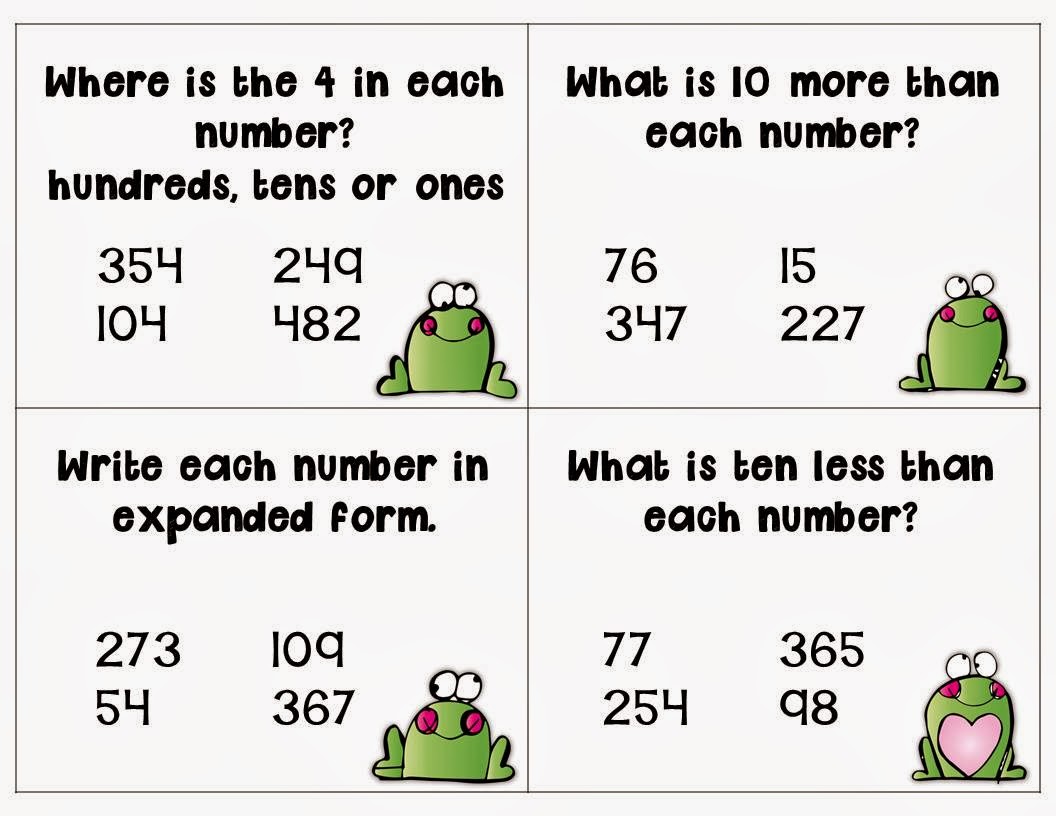Hi there! It's Lisa from Second Grade Stories... although there haven't been many "stories" to tell around here lately, considering we've barely been in school! I went back and figured out that since Christmas break - waaaaay back on Dec. 20, we haven't been in school a full week... nope, not once. There have been delayed openings, early closings, holidays and just plain snow days. All of this missed time makes every minute we're with our kiddos important. This brings me to
I blogged once already over at my place about ways to enrich your morning calendar time with TONS of math practice. Today we're going to focus on how to get the most out of lining up and waiting (in line to leave the room, to go into an assembly, for specials to start...)
1. Line up with "oral" exit slips. I know many teachers use exit slips - written answers to short questions - as a way to end the class. And I use them, too. I'm especially fond of post it notes, which I can organize and save for future planning. But sometimes - especially in the lower grades - writing ANYTHING down is another 10 minutes process. So, I ask students to respond orally, as they line up. For example, when the objective for the lesson was to distinguish between fiction and nonfiction texts, everyone lined up one at a time by telling me one text feature for fiction or nonfiction. We've lined up (or put away Daily 5 books) by sharing what the setting was from the story, naming a character trait and giving support, whatever goes with your lesson. The same is true for math. Ask students to line up by giving you a number with 6 in the tens place (you can differentiate by asking for 2,3, or 4 digit numbers), ask for a subtraction sentence with a difference of 8, a key word that tells you are adding in a word problem, etc. The possibilities are endless! And sometimes it really is eye-opening to know who can answer when you're discussing in a group, and who has trouble when they're put on the spot.
You can use this strategy when you have a few minutes waiting in line, as well. Ask everyone to name a famous American, something that is a liquid, an even number bigger than 50.... anything you want.
2. Task card questions: This one can be used as you line up, or while you are waiting in line to leave for an assembly, while everyone gets back from the bathroom, etc. I always have a set of task cards on a ring by my door. One is math and one is grammar/spelling/phonics. When we have a couple minutes in line, I'll take them out and ask the question. EVERYONE is responsible for thinking of the answer. Sometimes I'll hand a card to each student (you can differentiate again here, depending on the card you give a particular student) and have them give me the answer. (You can do this as they line up , as well!) I keep one set of cards for each month. I haven't used them for a full year yet, so I cant say if last year's February ones work for this year, but it's easy to go in and change the question on the cards to match what we are learning about or need practice in. I'm sharing my February cards below, just so you can get an idea of what they are like. maybe they'll work with your kiddos! Click on the image to download.
3. And, Not and Or: This one is not related to a specific academic skill, but it is an important language skill - and gets students to listen carefully, too! I use it mainly to line up. I know many teachers use statements like, "Line up if you are wearing a blue shirt," to keep everyone from getting in line at once. I take that a step further - how about, "Line up if you have a dog AND it is small." Or, "Line up if you have a tv in your kitchen, but NOT in your bedroom." You can make the statements related to the season, holiday, a topic or just random. It's a great way to also find out more about your students - something that is so important. When you do this with math, it opens a whole new area. For example - "Name me a number that is even AND is greater than 50," or "Name me a number that has an 8 in the ones place OR the tens place." Lots of thinking going on here!
4. Silly Voices: This one is a quick and easy activity for when you have an extra minute or two, but not enough to do something more in depth. It's simple - but it probably ranks as my students' favorite "mini moment" activity. Give students a task, and have them respond in a silly voice. Try, "Count by 10's starting at 42 in a robot voice." Or, "Spell ____ in a mouse voice." Students can respond in unison, or you can ask specific students to do a particular task. If you can't think of voices off the top of your head, ask your students! Or keep a list on an index card somewhere.
I hope I've given you a few ideas to get the most out of your "teachable time." What creative ways do you have for those mini moments?
I hope I've given you a few ideas to get the most out of your "teachable time." What creative ways do you have for those mini moments?








These ideas are great, I especially like the silly voices.
ReplyDeleteSara
Frampton's FUNdamentals